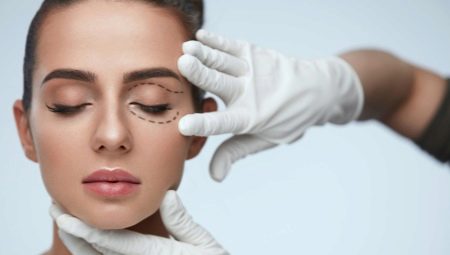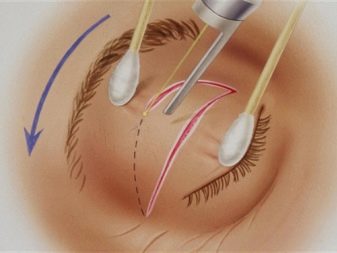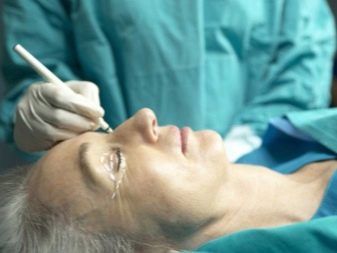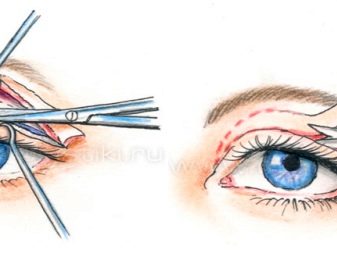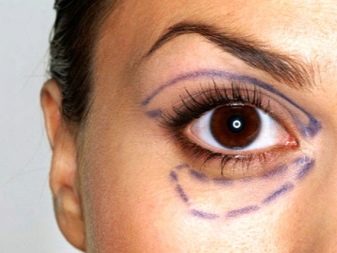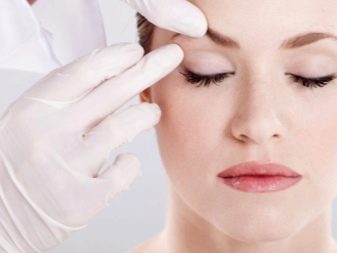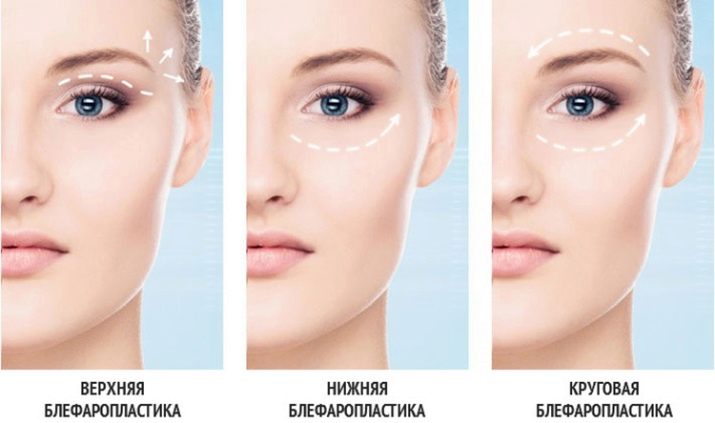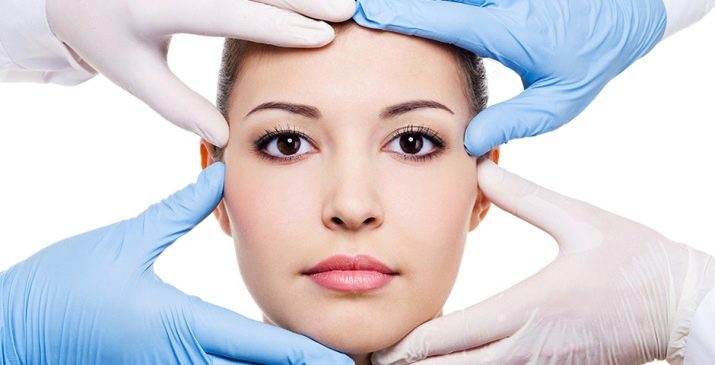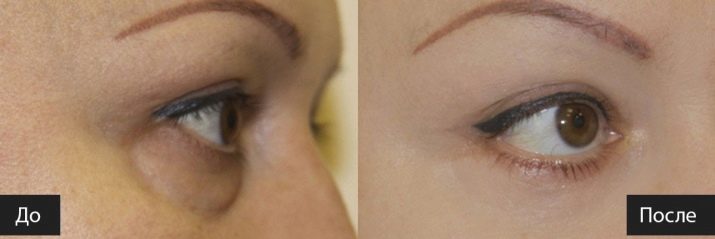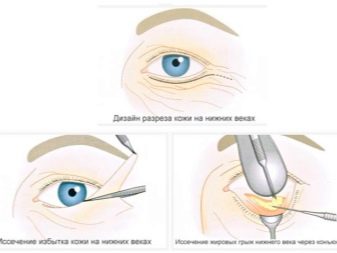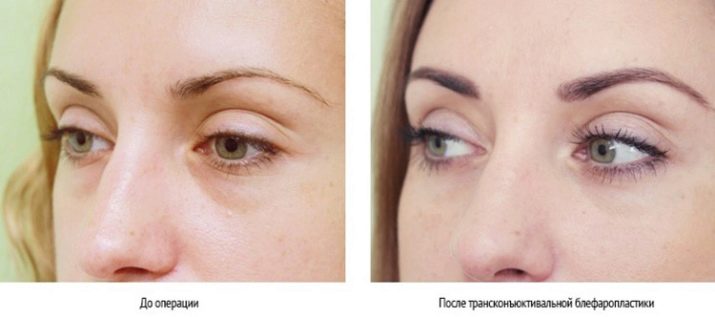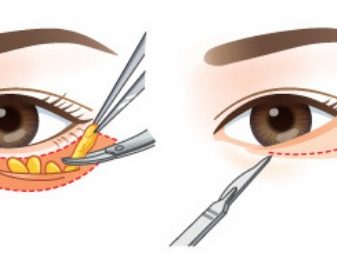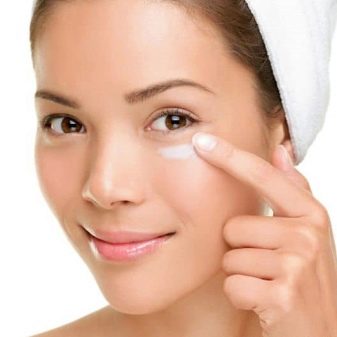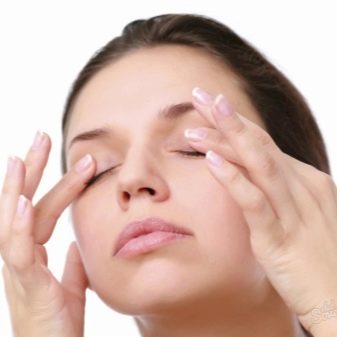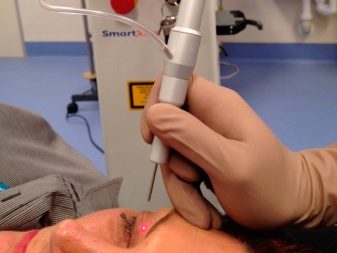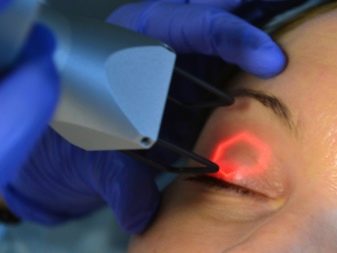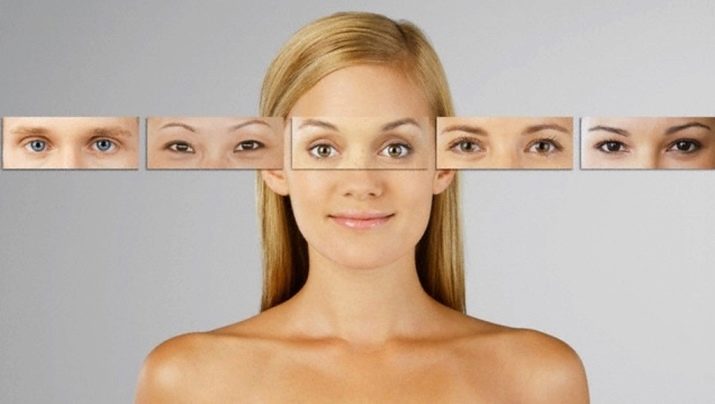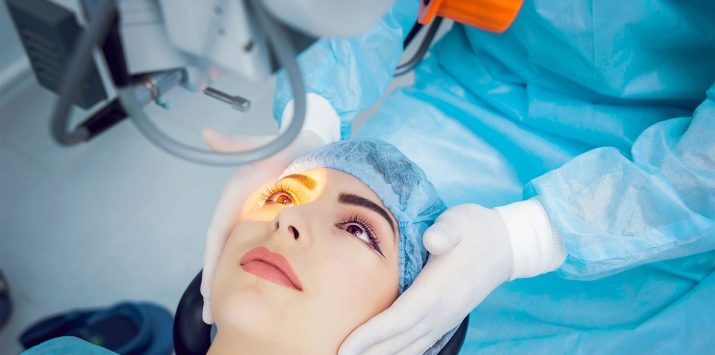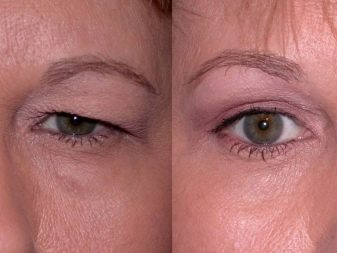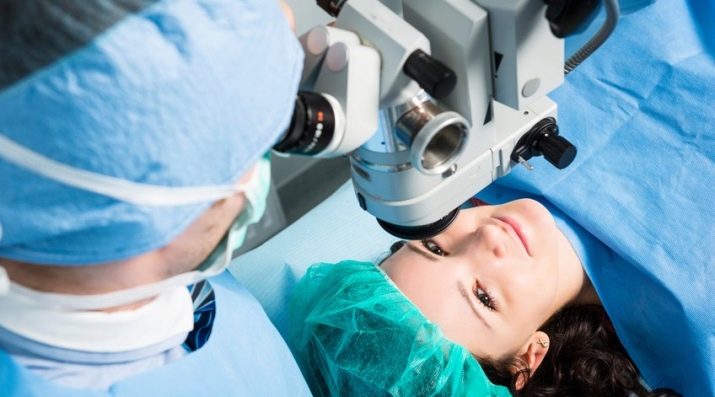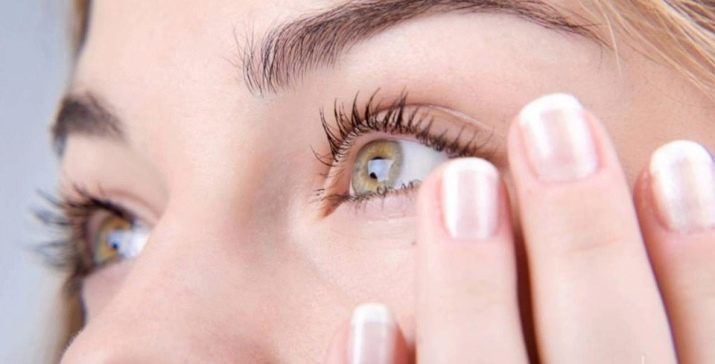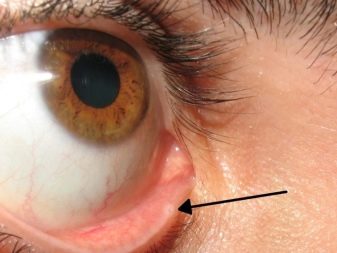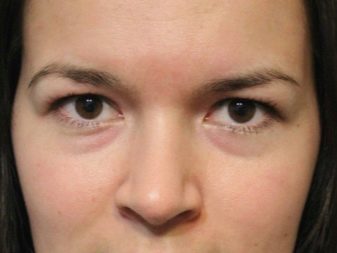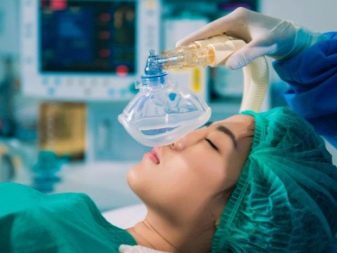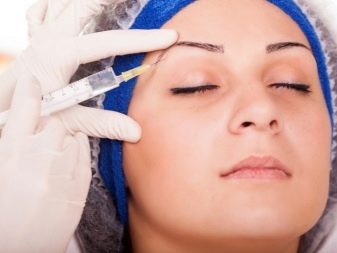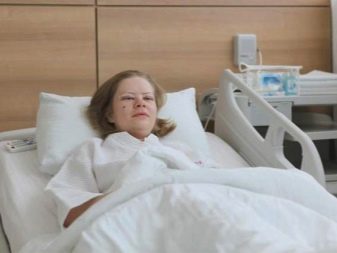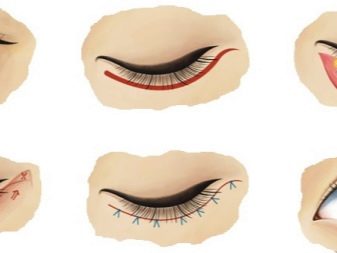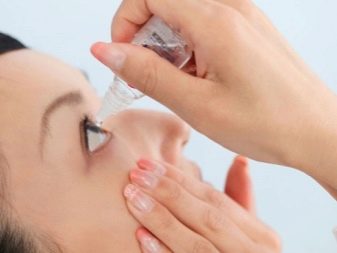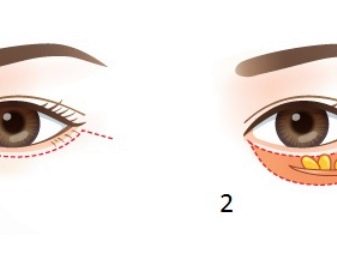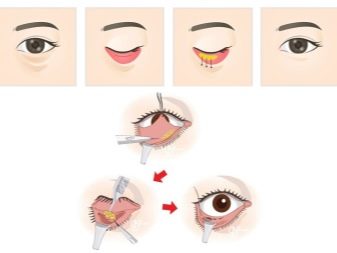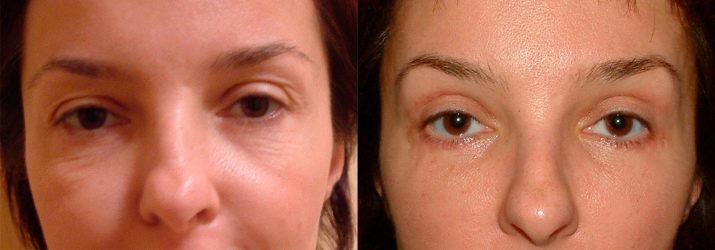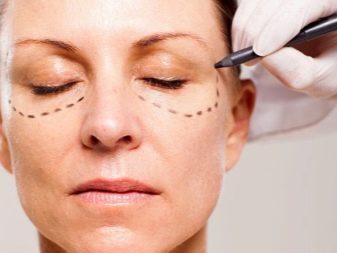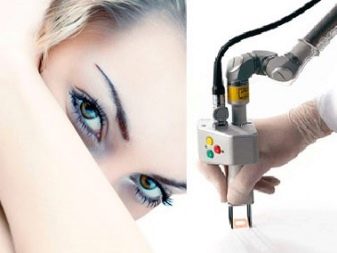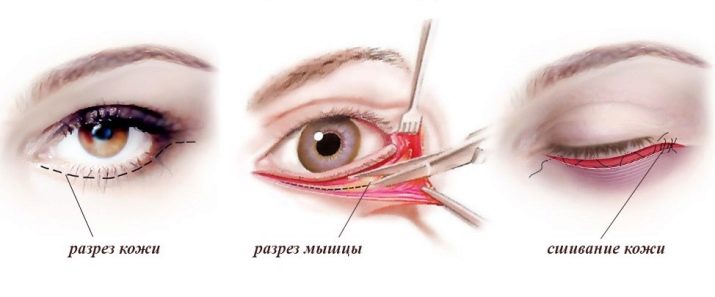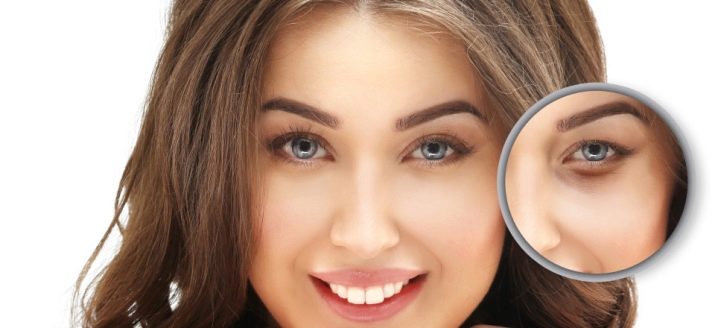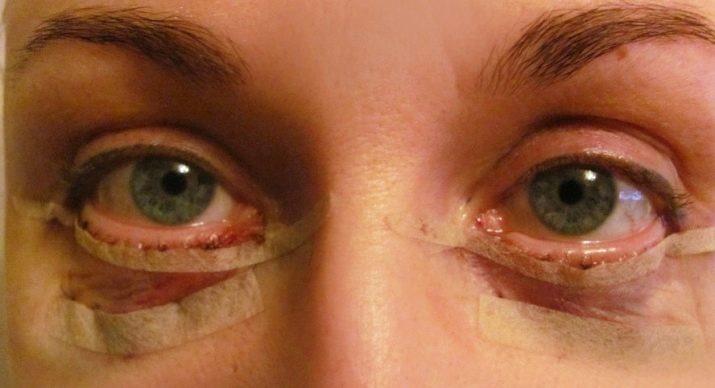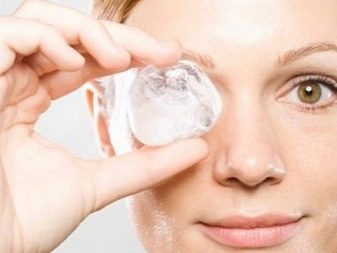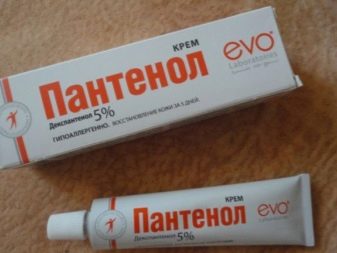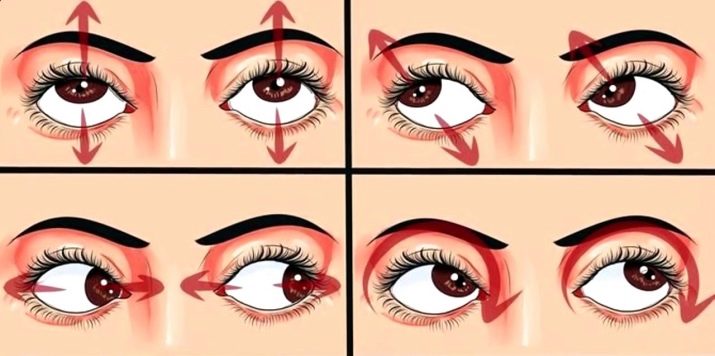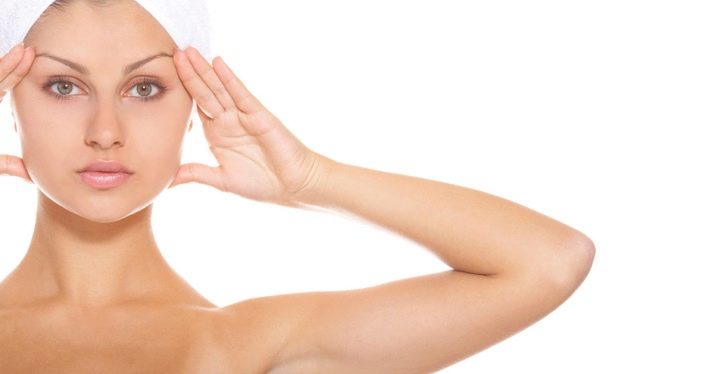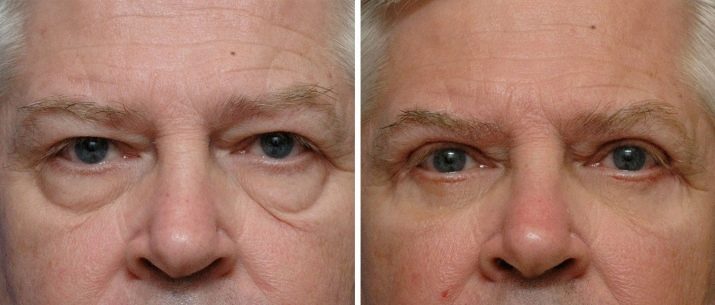Due to the fact that the skin of the eyelids is very thin and delicate, the age processes are manifested primarily in the area around the eyes. “There is no shine in the eyes” - they say about a woman who has undergone age-related changes on her face. Therefore, the ladies should know that in the cosmetic centers currently offered a universal procedure designed to solve many aesthetic problems in the eye area - blepharoplasty.
What it is?
The main advantage of the procedure is the possibility of carrying it out not only to solve a number of cosmetic defects, but also to restore vision. Often the hanging eyelid becomes the reason for the appeal to this operation. This problem leads to a narrowing of peripheral vision, and further to the deterioration of detailed work. Correcting the aesthetic defect, the doctor thereby restores the functionality of the visual organ.
The procedure itself is to remove subcutaneous fat and other formations through the skin incision. The operation is complicated, and therefore it must be entrusted to a highly qualified specialist.
Hernial sacs, wrinkles, unwanted eyelid shape and incision of the eyes - blepharoplasty can cope with all these problems. The procedure has an average degree of pain, but today some technologies allow performing the therapy with almost no pain.
In Russia and in Europe, women who have crossed the age limit of 45 years are mostly resolved for an operation., they want to tighten the eyelid skin with the help of the procedure. In Asia, young 18-year-old girls, who are dissatisfied with their eyes, often become clients of cosmetic centers - blepharoplasty can also solve this problem. After the procedure, the eyes of young ladies become visually larger and more rounded.
The puffiness of the eyelids, which occurs with age, is a hanging upper eyelid, dark circles appear under the eyes, each glass of water before bedtime only aggravates the situation.
This condition makes a woman irritable, she is unhappy with her appearance. Her eyes always look tired and really tired from swelling. This situation spoils the mood, there are also difficulties in applying makeup. After blepharoplasty, all these problems can be forgotten for a long time.
The operation is carried out:
- under local anesthesia;
- under intravenous anesthesia with local anesthesia;
- under general anesthesia.
The operation itself lasts on average from half an hour to an hour and a half.
This requires to be in the hospital for about a day. Stitches are removed about a week after the procedure. The price for the service of the operation depends on such factors as the type, the work of the surgeon and the anesthesiologist, the stay in the hospital. It should be remembered that all the tests that must be passed before the procedure, the patient pays separately. The average price in Moscow is 60 thousand rubles. In other regions, the maximum cost reaches 50 thousand rubles.
Kinds
Depending on the type of problem that has arisen and some other factors, blepharolastic is divided into several types:
- Plastic upper eyelid. The most common variety. During this operation, the surgeon removes excess tissue and fatty formations that provoke the overhang of the eyelids.
- Plastics of the lower eyelid. It can cope with puffiness of eyes, lacrimal grooves, flabby skin in the area of the optic organ, bags.
- Circular plastic. Combines procedures in the upper and lower eyelids. Usually, this type is recommended by cosmetologists, as an integrated approach can lead to a complete cosmetic result.
- Cantoplasty. This type of procedure is designed to change the cut of the patient's eyes. Basically, women tend to give their face a European type, but there are girls who prefer to see themselves with an Asian cut eyes.
- Cantopexy. It is a pull-up of the outer corners of the eyes to the desired level.
Each case requires a special technique, but, as we see, the procedure has practically no unsolvable problems.
Basic techniques of the surgical process:
- Classical. It is a puncture on the skin of the eyelids and the elimination of the problem through the hole made.
- Transconjunctival. In this situation, the incision is made on the inner lining of the eyelid. The method is good because it does not leave visual seams on the skin.
- Combined. Combines the traditional way through a scalpel and the use of a laser device. Laser grinding of the skin in the peri-orbital zone allows eliminating scars, irregularities, smoothing areas where wrinkles have formed.
To understand what type of blepharoplasty is suitable for a specific problem, you need to familiarize yourself with the most common types in more detail, to learn about their advantages and disadvantages.
Fat-preserving
The essence of fat-preserving blepharoplasty is the same distribution of the fat formations that have occurred. That is, in fact, the appeared defect is not eliminated, and its fat is transferred to other tissues around the eye. This method prevents such a phenomenon as skeletization of the eye, which means tight fitting of the skin of the orbit. This complication often occurs after some plastic procedures.
The method allows to get rid of xanthelasm. This phenomenon is the formation of a yellowish shade in the form of a plaque in the upper eyelid at the inner corner of the eye.
In addition, the technology prevents such a consequence, as a drop in the eye, is able to smooth out the lacrimal grooves. Thus, the patient's face after the procedure takes on a young and fresh look. By filling the eye-orbital areas with the client's own fat, the doctor removes an excessive amount of skin on the eyelids.
The advantage of the procedure is a long lasting effect. The visual result is maintained for 6-7 years.
Transconjunctival
During the operation transconjunctival way, an excessive amount of fat in the area of the eyelids is eliminated. The difference of the technique is its gentle nature. This applies seamless surgery. The intervention is performed through the conjunctiva, the tender skin of the eyelids is not affected. The doctor performs a puncture on the conjunctiva and, through a micro-incision, eliminates fat formation. In the same way it is possible to modify the areas of fat pouches, correct the shape of the eyelid
Main advantages of the variety:
- total absence of internal and external stitches and scars;
- short rehabilitation period: after a couple of weeks, some standard consequences in the form of bruises and edemas are completely eliminated;
- almost no complications;
- effective cosmetic result.
Contour plastic
It is an injection procedure performed without the aid of a scalpel. The main goal of therapy is the elimination of defects caused by mimic and age-related processes.
During the operation, the woman is fully conscious, using anesthetic external agents as anesthesia.
Under the areas where the wrinkles are located, the surgeon injects a medicinal cocktail by injection. It usually contains hyaluronic acid. Formed with the advent of age, the crack is filled from the inside with the preparation, thereby the skin around the eyes is leveled.
Collagen, actively secreted under the influence of therapeutic agents, strengthens the tissues and, as a result, fixes the result of the procedure. The face takes on a young and fresh appearance.
This type of surgery is appreciated by patients for the following benefits:
- instant tightening effect;
- short recovery period;
- painlessness;
- lack of scars and other effects of skin trauma;
- reasonable price in comparison with other techniques.
Among the shortcomings of the procedure, the main ones are short life.
After a year, the effect is lost, as the preparations filled under the skin dissolve.
Circular lift
The most preferred blepharoplasty. This is due to the fact that the technology affects the entire area around the orbit. Thus, the procedure is able to cope with all the existing problems.
The method can be considered a radical measure of rejuvenation, as it eliminates age-related defects. “Age cracks”, dark bruises, a lowered eyelid, a discomfort caused by age under the eyes disappear.
Cuts are made in the zone of the lower eyelid under the eyelashes and in the natural folds. Through punctures, the surgeon pulls out fatty hernia, evenly distributes fatty formations, it is possible to lift or strengthen the muscles under the eyelids. Excess skin is also removed.
After surgery, there may be subtle scars on the face, which eventually become invisible or disappear completely.
Eyelid resection
In this situation, an accurate cut-off of a small element of the eyelid is carried out for correction, after which the saved parts are joined.
The operation is performed in natural folds, which gives a positive cosmetic effect. But in exceptional situations, the procedure in the natural fold is impossible. And in this case there is also a high probability of achieving the ideal result without aesthetic defects.
Despite the brittleness of the eyelid skin (its thickness is just one millimeter), it has the ability to recover quickly. During the rehabilitation period, the use of various creams is required, as well as massage and gymnastics, all these measures also contribute to accelerated healing.
Laser
Before the procedure, special lenses are worn on the patient's eyes to protect the visual organ from the effects of the laser. The therapy is carried out under local anesthesia, its functions are performed by anesthetic creams.
The bottom line is that the incision is made through a special laser apparatus. Further, fat formation and excess skin are eliminated through the puncture. In addition, under the influence of a laser, skin cells are heated, which has a beneficial effect on eyelid tissue. Muscle tissue is strengthened, collagen production is activated.
Oriental
It is a surgical correction of the Caucasoid incision of the eyes. It consists in removing the epicanthus, which leads to a mild natural fold of the upper eyelid.
The Epicanthus is a fold located at the inner corner of the optic organ that hides a tearful tubercle. This problem may disturb the patient from birth, and may be acquired as a result of injury to the eye. This particular fold is removed by the surgeon during the oriental procedure, after which a double supra-orbital fold is created.
After the operation, the upper eyelid of the client turns out to be more active, the facial expression is natural and pronounced, and the result may be a modified eye shape.
Indications
The task of the plastic surgery is the elimination of excess fat or skin tissue in the area around the eye.
The most common problems that patients turn to a plastic surgeon to perform this procedure are:
- Xanthelasma Formed in the area of the eyelids in the form of yellowish flat plaques. By nature, benign.Most often found on the upper eyelid in the inner corner of the eye. First of all, this problem is inherent in patients with diabetes or high cholesterol.
- Wen or lipomas. A defect occurs in the area with a shortage of adipose tissue. It looks like a small fat formation, inside which lies fat.
- Papillomas. These are moles that form in the area of the skin around the eyes in the form of hanging formations.
- Halyazion. It is a cyst formation. It has a benign character, but if its size exceeds 5 mm, then there is the likelihood of malignancy. To prevent this negative process, the neoplasm needs to be removed.
In these cases, the resulting formations are eliminated by the surgeon.
Other skin problems that blepharoplasty can solve:
- century sagging;
- epicanthus;
- excess skin in the lower eyelid;
- wrinkles;
- severity of eyelids, which provokes the appearance of tired eye syndrome.
These are the most common defects that women complain about when they decide to undergo surgery. After the procedure, the patient's skin looks fresh and healthy. With the help of the presented type of plastic it is possible to change the cosmetic shape or the shape of the eyes.
Contraindications
It is very important before the operation, during the examination by the doctor of the patient's history, to inform him of the full information about the state of his health. Perhaps a woman has serious contraindications to the procedure, which is a threat not only to her body as a whole, but also to life.
The main restrictions for the operation:
- exacerbated chronic diseases;
- myopathy;
- high pressure inside the skull;
- oncology;
- diabetes;
- impaired blood clotting;
- anemia;
- blepharitis or keratitis;
- hypertension;
- corneal infections;
- critical days.
In no case can not be silent about any restrictions.
This is a very serious operation.
In case of non-compliance with any conditions, including the absence of accounting for contraindications, the patient can expect such complications as:
- Puffiness This process will occur after the operation, even in the absence of contraindications, but if the swelling does not disappear within a week, then this is a reason to seek advice from the operating physician.
- Bleeding. Small hematomas can also be a variant of the norm, but if the site of injury increases in size, and the blood does not stop, then you need to visit the surgeon again to eliminate the cause of the bleeding.
- Scarring. After performing transconjunctival or laser therapy, they should not be. During other varieties, scars may appear in case of unaccounted health factors. If after a month the tissue has not recovered, then it is necessary to resort to the introduction of special preparations under the skin through various cosmetic procedures.
To avoid all these unpleasant consequences, one should take into account contraindications and individual features of the body when performing the operation. Usually, the operation does not have a seasonal focus, so many people prefer to go to the doctors in the summer, when they want to come to work with a fresh and young face. Opinions of doctors in this regard differ.
Advantages of the procedure in the summer:
- summer vacation allows you to sit out the entire two-week rehabilitation period at home;
- In the summer months, blood flow in the dermis improves, which has a positive effect on the activation of collagen production and tissue healing.
Cons of the operation in the summer:
- Avoid direct sunlight on the face;
- you can not sunbathe;
- improved blood flow provokes the active formation of scar tissue;
- due to the summer heat, dressings applied to the face will cause discomfort.
To choose the most successful period for the implementation of surgical intervention, it is better to consult with a specialist.
Most likely, it will focus on the individual characteristics of the patient's body.
Training
An important stage of preparation is the choice of a plastic surgeon and a medical center where the operation will be performed. If the procedure is offered by an unscrupulous doctor with little experience, the patient risks facing the following complications:
- Inversion of the lower eyelid. In case of occurrence of this phenomenon, a woman cannot completely close her eyes, and then the visual organ begins to dry out. The doctor who blamed for the amount of tissue being removed is to blame for the problem. A repeated procedure or a special massage can give the eye a healthy position.
- Infection. A microscopic foreign body can get into the incision, which will subsequently cause an infectious process. Before carrying out the procedure, the operating room must be completely disinfected, the instruments decontaminated.
- Bags under the eyes. They are a variant of the norm during the recovery period, but sometimes they can arise due to the lack of professionalism of the doctor. For example, an inexperienced surgeon may overdo it with added tissue during a fat-preserving blepharoplasty. Eliminate the flaw can only be repeated surgery.
- The divergence of the seams. The phenomenon may occur due to an error in the process of their imposition. When a problem is formed, it is necessary to hem the loose fabric again.
- Asymmetry of the eyes. The reasons may be incorrect suturing, uneven elimination of adipose tissue.
- The omission of the century. Observed in case of incorrect technology of therapy. Save the situation will only re-operation.
- Epicanthus. Formed in the event of excessive tissue tension. The defect is eliminated through a secondary procedure.
In order for the patient to avoid all these consequences, it is necessary to choose a well-proven medical center or a cosmetology institute, examine all the available documents and licenses.
Choosing a doctor, pay attention to his experience in conducting a specific type of operation - his practice must be at least two years.
Having chosen a doctor, the woman proceeds to the next stages of preparation.
She is expected to talk with at least three doctors:
- plastic surgeon;
- anesthetist;
- ophthalmologist.
It is important not to hide anything in a conversation with experts. About the complications that await the patient, silent about any health problems, it was written above.
Before talking with your doctor, prepare the following information:
- are there any allergies;
- Lifestyle;
- genetic predisposition to any disease;
- alcohol or tobacco addiction;
- skin problems in the eye area throughout life;
- visual impairment;
- previously performed operations.
After talking with the doctor, the patient will be assigned a list of tests.
Usually it includes the following items:
- KLA and blood biochemistry;
- OAM;
- blood type and Rh factor;
- HIV, syphilis and hepatitis tests;
- coagulogram;
- ECG;
- fluorography.
Clinical examination of a woman who has consulted a doctor for the procedure presented includes the following steps:
- determining the amount of excessive amount of skin tissue on the eyelids;
- identifying the exact position of excess subcutaneous fat;
- examination of the structure of the "crows feet";
- the position of the outer third of a century;
- stage of ptosis, if present, and the probability of its formation;
- fibrous tissue condition;
- the work of the muscles controlling the rise of the eyelids.
Direct preparation for the procedure usually consists of the following conditions:
- you can not eat and drink at least 8 hours before the operation;
- the procedure is carried out no later than 4 days before the critical days or after menstruation;
- it is necessary to come to the operation together with one of the relatives for further support;
- before the procedure can not smoke;
- a few days before the treatment, it is required to refuse to take medicines that can reduce blood clotting;
- It is necessary to take an ointment developed specifically for use after this procedure, or Traumeel-S gel, Vizin eye drops.
How is it going?
Having chosen a highly qualified doctor and having carefully prepared for the operation, the patient comes to the procedure. Each individual problem requires performing a specific type of blepharoplasty. Their technology is significantly different.
Classic for upper eyelids
The procedure consists of the following steps:
- the client is asked to lie down and not close his eyes;
- the surgeon retreats 9 mm from the line of ciliary growth, noting the bottom of the lowered fold;
- then the patient sits down and slightly closes her eyes;
- the doctor determines the top edge of the fold and marks the instrument;
- the client is anesthetized with local or general anesthesia: in the first case, antibacterial compounds are used, then an injection is made into the upper eyelid;
- the marked area is removed by the device;
- then an incision is made with the elimination of small muscle tissue;
- in the center of the recess, the circular muscle is separated from the fibers and through the fascial septum they penetrate into the central pocket through which they eliminate fat;
- stitches and bandages;
- the patient is transferred to the ward.
If local anesthesia was used, the woman can go home after 3-4 hours.
If general anesthesia was used, the client remains in the hospital for a day.
Classic lower
The procedure is carried out in the following sequence:
- the doctor marks the areas necessary for the correction, starting from the area under the tear point at a distance of up to 2 mm from the place where the eyelashes grow;
- then the woman should sit down and close her eyes so that the doctor will be sure that the marks are correct;
- anesthesia is performed;
- along the marked line the surgeon makes an incision and separates the tissue from the muscles;
- through the fibers of the muscle the tool penetrates into the central adipose pocket, from where fat accumulations are eliminated;
- from internal and external pockets deposits are eliminated in an identical manner;
- the most important stage of the procedure is the assessment of the amount of excess tissue: the probability of complication in the form of shortening the lower eyelid depends on the correct actions of the doctor;
- stitches and dressings.
Sometimes the technique involves the stage of pulling up the outer eyelid and attaching it to the periosteum in order to prevent the appearance of inversion.
Transconjunctival
In this case, the markup is not needed, so the doctor immediately starts the procedure:
- the surgeon retreats 2 mm from the bottom of the conjunctival sac and makes a puncture on the conjunctiva 1.5 cm long;
- fatty deposits are removed from the hernial pockets through a horizontal incision;
- stitched over.
In this situation, skin folds are not subjected to excision, which ensures the absence of a lifting effect.
Laser
Usually, a laser procedure is prescribed for age-related skin defects. In the upper eyelids, folds are removed, with the correction of the lower eyelids, edema, hernia, and bags are eliminated.
We use carbon dioxide or erbium laser:
- First, the doctor makes the necessary markup;
- special lenses are put on the patient's eyes;
- apply local anesthesia in the form of a cream;
- in the natural crease is cut by a laser;
- through deepening eliminates fat and excess skin;
- the wound is processed, the seam is applied;
- then a cold compress is applied to the injured area.
Canthopexy
It has already been noted above that the operation is intended for tightening the tendons of the outer corners of the eyes, as a result of which the eye section is modified, the drooping lower eyelid is eliminated.
Technique of:
- the doctor applies the markup;
- General anesthesia is usually performed, but local anesthesia is sometimes suggested;
- the first puncture is made on the lower eyelid at the level of 2 mm from the place of growth of eyelashes;
- a second incision up to 1 cm in length is performed under the brow in a natural fold;
- through depressions in the lower eyelid, fatty hernias are eliminated;
- through the upper incision, the periosteum is stitched, then a special suture is made under the ligament forming the outer corner (all these actions are performed by a self-absorbing thread);
- the periorbital muscles are fixed, after which the thread is returned to the periosteum;
- the ends of the thread are connected and fastened;
- excessive formation of skin tissue is removed;
- stitches overlap, with only two nodules remaining above the epidermis.
If canthoplasty is performed, the operation steps are the same, but some of the tendons are eliminated, their ends are joined and hemmed to the periosteum.
Recovery
The rehabilitation period is usually not long.
Stitches are removed a week after the procedure.
Women should prepare for some of the consequences that cannot be avoided after surgery.
In the first weeks the patient is waiting for:
- small hematomas on the face;
- swelling of the eyes;
- visible strips of cuts;
- bruises.
All these problems - the norm, they must fully pass in 2-3 weeks. If during this period there is no improvement, then it is worth contacting the operating physician for advice.
Proper care of the area around the eyes that has undergone surgery will speed up cell repair:
- In the first days it is recommended to apply ice to the face. To do this, wrap the ice in a towel or place it in a sealed bag and keep the bundle in the face area twice a day for 3-5 minutes. Cold minimizes swelling.
- Pharmaceutical ointments can be used for tissue repair in sections of incisions. "Traumel", "Bepanten", "Panthenol" will do.
- Microcurrent therapy will help reduce puffiness and speed up the regeneration of skin cells.
In addition to skin care, after the procedure it is recommended to observe a few more conditions:
- prohibited physical activity;
- it is necessary to refuse to go to the solarium, bath, sauna, do not take hot baths;
- you need to do at the time of rehabilitation without alcohol and smoking;
- better not to eat heavy food;
- contact lenses should not be worn;
- for sleep you need to choose a high pillow;
- traumatic facial procedures such as peeling or massage should be avoided;
- it is better not to wash with tap water, but to use special lotions and products based on artificial tears;
- you should not sit for a long time in front of the TV or computer monitor.
After completing the therapy, light exercise will help bring in the muscles of the eyes.
Gymnastics promotes accelerated healing of bruises and swelling and improves the final result.
The following exercises are recommended:
- We look straight ahead. We look to the left, then - to the right. We carry out several times.
- Raising his face up, we begin to blink as quickly as possible within 40 seconds.
- Close the eyelids tightly and rapidly open our eyes, peering at some object in the distance. Perform 5-6 times. It is important to avoid frowning eyebrows.
- Gently place the fingertips on the eyelids. Without removing them, try to open your eyes. Required to repeat 5 times.
- Putting fingers on the temples, trying to gently pull the skin up, slightly lifting the incision of the eyes. Exercise done 5-7 times.
Tips
Surrendering to the surgeon’s hands, the patient trusts him completely with her health and beauty. To avoid medical errors and side effects after surgery, you need to choose a competent specialist.
To do this, listen to the following tips:
- Do not believe advertising on banners. Better find the real ranking of the best surgeons in your city.
- Examine the doctor's portfolio. See before and after pictures, but do not focus on them. Obviously, the doctor will present the most successful work.
- Read the information about the medical center where the doctor works. Make sure you have licenses.It is useful to read the reviews operated by the selected specialist. Also, customer opinions about the medical center itself are also important.
- If the doctor reports that his work experience is 15 years, it is worthwhile to clarify what is the experience in exactly blepharoplasty. Perhaps he just started this activity. Ask for certificates, pay attention to the dates in the documents.
- Take into account the opinions of friends and acquaintances. If a friend has a brilliant result of blepharoplasty, then in her "tip" you can contact the same specialist. However, if a friend is satisfied with the result after a breast augmentation surgery, this does not mean that the same doctor professionally performs blepharoplasty.
Advice to those who decided to undergo surgery, give and cosmetologists:
- Blepharoplasty can be combined with other cosmetic procedures, for example, with temporal, frontal or facial lifting. It is possible to simultaneously perform eyelid correction, as well as dermabrasion or peeling.
- You can start using cosmetics after the procedure after 10 days, but you should choose hypoallergenic products. You can return to mild exertion after 7 days, more serious sports can not be started earlier than after 2 weeks.
- An effective way to hide the scars after the correction - tattooed eyelids. However, you can contact the medical center for this service no earlier than six months later, when the scars are fully healed.
- Blepharoplasty is recommended not only for women, but also for men. Many men want to get rid of in adulthood from the sullen facial expression that gives age. The presented operation copes well with this task, but the technology of the procedure will differ from the procedure for a woman.
Blepharoplasty is an effective and almost painless eyelid correction procedure.
It fights age problems well, and its effect can last up to 10 years. However, in order for the procedure to be carried out correctly and the result pleased the patient, it is worthwhile to take full responsibility for choosing a competent specialist.
For more information about the procedure blepharoplasty lower eyelids, see the video.
